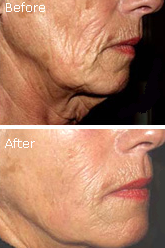
dermal filler injection
This certainly is an era of science and technology. Almost everything is powered by fuel and electricity. Almost every work is performed by machines and gadgets. And almost every product is made synthetically. How the world transformed from Stone Age to Polymer Age, nobody knows. All we know is that it happened. And speaking of synthetic products, scientists and chemists do have a great contribution to their existence and applications. The compounds that exist in nature or inside the body can now be easily replicated in the laboratory. With the right elements, composition and formulation, simple and complicated compounds are produced.
One of the synthetic compounds that give great benefits to human beings is poly-L-lactic acid. Poly-L-lactic acid is used for medical purposes. It is a component of dissolvable threads, which are used for surgical stitches. It is also used to plump the cheeks of patients suffering from human immunodeficiency virus (HIV) for they develop facial lipoatrophy or facial fat loss.

Sculptra Before And After Pictures Of A Woman’s Face
Due to its wide applications in the field of medicine, poly-L-lactic acid was investigated for its possible cosmetics or aesthetics applications. And on 1999, Europe found out that it can be used for the removal of skin folds and wrinkles, and for the improvement of hollowed cheeks and sunken eyes. It was called New Fill back then.
The use of poly-L-lactic acid for HIV patients was approved by the United States Food and Drug Administration (FDA) on 2004. The use of poly-L-lactic acid in dermal fillers was approved by the FDA on 2009. One of the dermal fillers that contain the said acid as its main ingredient is Sculptra. Nowadays, Sculptra is widely used for making the skin young and smooth once again. It helps to reduce nasolabial lines, marionette lines and forehead wrinkles. The said injectable beauty product is also used to lighten the appearance of facial scars. Due to the constant demand of the product, poly-L-lactic acid is now especially used for cosmetics and aesthetics.
Sculptra is one of the most in-demand dermal fillers in the United States. This is because compared to other dermal filler brands, it lasts longer (about two years) and it works more effectively (about 80% effectiveness on treated areas). However, the patient needs to undergo about four to six treatments to achieve optimized results. This is because the poly-L-lactic acid that is contained in Sculptra is being absorbed by the body, and thus, is needed to be replenished by undergoing another treatment. Also, the results will not show immediately; it takes a few weeks for Sculptra to regenerate one’s youthfulness because it needs to stimulate the production of collagen in the skin.
Sculptra is not derived from animals so there should be no allergic reactions after the treatment. But medical attention is still necessary because lumps may develop after the medical procedure. Usually, the patient is advised to massage the treated areas regularly to disperse the compound particles. Swelling and moderate pain may be experienced in the first few days but they should disappear naturally.











